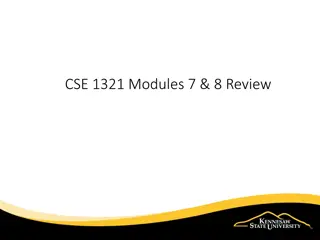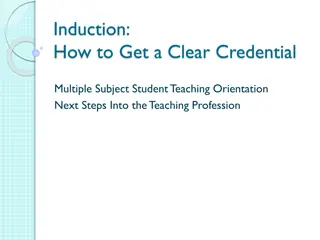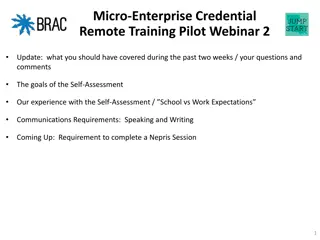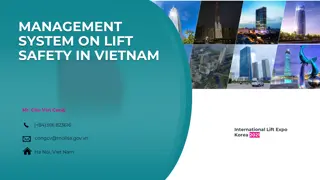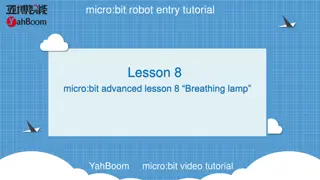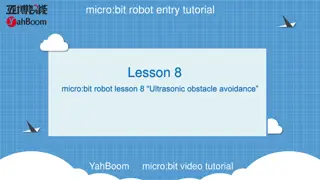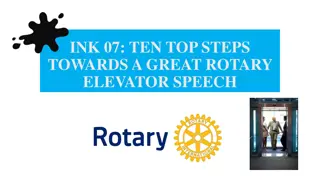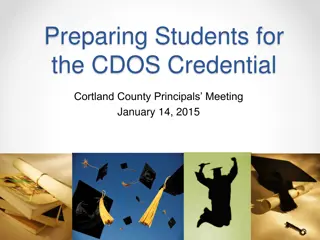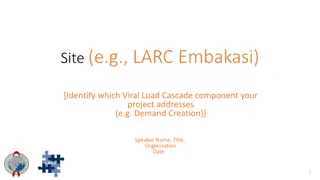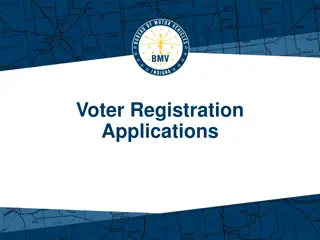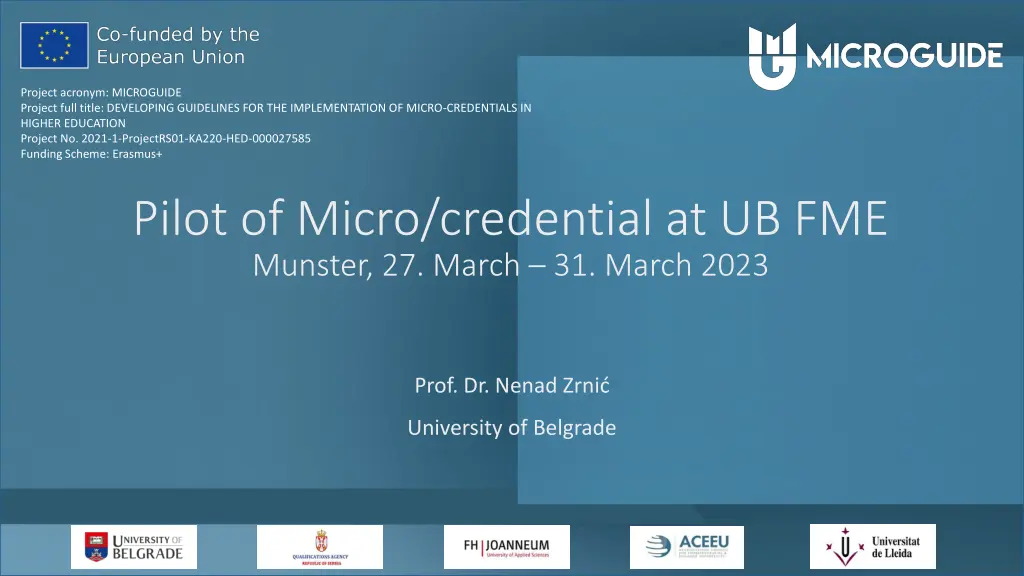
Developing Micro-Credentials in Elevator Engineering
Explore the initiative aiming to equip engineers with specialized skills in elevator engineering through micro-credentials, addressing industry demands in Serbia. Discover the motivation and purpose behind choosing elevators as the subject for this innovative educational project.
Download Presentation

Please find below an Image/Link to download the presentation.
The content on the website is provided AS IS for your information and personal use only. It may not be sold, licensed, or shared on other websites without obtaining consent from the author. If you encounter any issues during the download, it is possible that the publisher has removed the file from their server.
You are allowed to download the files provided on this website for personal or commercial use, subject to the condition that they are used lawfully. All files are the property of their respective owners.
The content on the website is provided AS IS for your information and personal use only. It may not be sold, licensed, or shared on other websites without obtaining consent from the author.
E N D
Presentation Transcript
Project acronym: MICROGUIDE Project full title: DEVELOPING GUIDELINES FOR THE IMPLEMENTATION OF MICRO-CREDENTIALS IN HIGHER EDUCATION Project No. 2021-1-ProjectRS01-KA220-HED-000027585 Funding Scheme: Erasmus+ Pilot of Micro/credential at UB FME Munster, 27. March 31. March 2023 Prof. Dr. Nenad Zrni University of Belgrade
Why choosing elevators as a subject? Purpose of choosing micro-credential in a particular topic for engineers/students A new way for students/engineers to broaden their skillset, tailor their education to prepare for their careers, and stand out to employers. Leveraging the industry connections forged by the of Department of Material Handling, Constructions and Logistics, experts in topics such as elevator design and maintenance will deliver intensive workshop at University of Belgrade, Faculty of Mechanical Engineering. The topics chosen for the workshops were based upon interviews with mechanical engineering graduates from the ME program and involved in the elevators industry.
Purpose of choosing micro-credential in a particular topic for engineers/students The intent of this workshop is to provide students or engineers an opportunity to gain helpful skills outside the classroom that will help them prepare for their careers in elevator industry and allow them to make informed choices on their career paths. After completing a rigorous workshop designed to give them a breadth of knowledge on the given topic, the students will be tested for their proficiency. When successful, they are awarded a certification that can be used on their resumes and other materials to tangibly demonstrate their skill.
Motivation There are more than 25,000 elevators in residential buildings in Serbia, of which as many as 15,000 are "ripe" for replacement, which requires about 450 million EUR, according to the data collected by Chamber of Commerce of Serbia. Half of the total numbers of elevators are in Belgrade, the capital of Serbia. Out of them around 7,000 elevators in Belgrade are ready for complete replacement. The problem is also the years of "service", i.e. the fact that elevators in the country are on average 44 years old, and the average service life of an elevator is 25 years, but also lack of professional staff, because there are not enough servicemen and installers of elevators in Serbia, but also not enough engineers specialized in the field of elevators.
Motivation Many who work in this profession are at the end of their careers, and there is a lack of younger workforce. It is a specific field that requires mechanics, knowledge of mechanical engineering, electrical engineering and automation. 1.6 million people are transported daily by elevator in Belgrade, which is more than the performance of public transport vehicles.
State-of-the-art in elevator practice in Serbia Technical legislation in the field of elevators is aligned with EU legislation, by adopting technical regulations that prescribe requirements for placing new elevators on the market, as well as requirements for elevators that are in use. More and more multi- story buildings are being built, in which elevators are often installed, which are becoming more and more modern and technically demanding, and on the other hand, the already installed elevators are getting older. From all of the above, there is a need for a more precise regulation of this area for easier and faster monitoring of all activities in this area, as well as better connectivity and easier communication of all business and educational entities in this field. Unfortunately, there is lack of data on the number and qualification, i.e. personnel structure of elevator maintainers.
State-of-the-art in elevator practice in Serbia According to available data the current age structure of personnel/engineers holding BSc or MSc degree is 50-60 with BSc and 60+ with MSc, having more than 20 years of working experience in the elevators industry and related jobs. In accordance with the collected data from the SBRA (Serbian Business Register Agency), a total of 186 business entities in the elevators sector were identified, of which 117 entrepreneurs and 69 companies, mostly limited liability companies. Based on the collected data, it can be concluded that the field of installation and maintenance of elevators is very current, and the demands placed on all economic entities participating in the installation and maintenance of elevators are increasingly complex.
State-of-the-art in elevator practice in Serbia By looking at the current situation in the field of elevators, regarding the number of economic entities involved in the process of putting elevators on the Serbian market, inspections of elevators, as well as maintenance of elevators in use, it is noted that there is a need for further improvement of all activities in this area, among others, through: - Increase in the number of employees considering the increase in the number of elevators, - Employment of young people in order to transfer knowledge as soon and as successfully as possible, - Organization of trainings and professional workshops, - Acquaintance with the content of regulations and standards, - Organizing knowledge tests. All those mentioned facts impose the need for offering an appropriate workshop regarding elevators at the Faculty of Mechanical Engineering (University of Belgrade) recognized through micro- credentials with certain number of ECTS and issued certificate.
Name of the course: Elevators Purpose of the course: The purpose of the course is to acquaint participants with the basic principles of elevator operation, their classification, main parts of elevators (shaft, guide rails, cabin frame, cabin, counterweight, elevator drive, ropes, safety components, control systems) and corresponding EN standards, technical drawings in elevator design, technical documentation, maintenance, occupational health and safety and correspondingly basic terms in foreign languages (especially English).
Learning outcomes of the course Upon successful completion of this course, participant should be able to: Be familiar with existing types of elevators, and also be aware of definitions and symbols used in the analysis and design of elevators; explain the different principles of elevator operation. Be familiar with specifications and design practices adopted by various manufacturers for elevators, including corresponding data, figures and graphs, particularly related to current design practices in Serbia; Explain the difference between an electric and a hydraulic lift, list and distinguish the basic parts of the elevator and its safety components; Understand the elements of technical drawing of elevators, distinguishes the basic elements of the elevator on the technical drawing and understand the meaning of the basic abbreviations on the technical drawing.
Learning outcomes of the course Be informed about technical regulations and legislations, including valid standards for elevators, EU Machinery directive, corresponding by-laws and safety regulations. Be familiar with the issues of occupational health and safety. Understands and uses terminology in English
Content of theoretical education (45 hours) Introduction (from history to contemporary trends) Principle of elevator operation Classification of elevators Basic parts (lift shaft, rail guides, cabin frame, cabin, counterweight, elevator drive, supporting means, safety components, control) Specifications for the design of elevators Belt and rope drives Design analysis of lift elements and components Elevator travel analysis Environmentaly friendly elevators
Content of theoretical education (45 hours) Principles of lift traffic design Technical drawing (base, section) Basic principles of visual presentation in elevator construction (how to present elevators and components) Basic abbreviations Construction book Technical documentation (assembly drawing, electrical diagrams, assembly instructions) Internal documentation
Content of theoretical education (45 hours) Fundamentals of elevators maintenance Basic safety rules Safety at the construction site (protection of the work area, shafts) EU Machinery directive EN and other relevant standards for elevators National regulations for elevators Basic professional terms in English (Glossary of Elevator Terms)
Content of practical education (65 hours) Video presentations of constructions and principles of operation of elevators Examples for calculation of elements of lifting mechanism and super structure Application in elevator design of software for 2D drawings and 3D modeling Laboratory exercise on the computer, 2D drawings and 3D modeling of elements of elevators Presentations by professionals employed in the elevators industry in companies (showrooms, design office, production plant.
Conclusion The whole course lasts 10 weeks and requires 12 hours of study a week (totally 120 hours). Upon completion, the 12 credits are awarded to the participant and can then be counted towards participant qualification. The condition for issuing the certificate is that each participant has to pass knowledge tests.
Thank you for your attention Vielen Dank f r Ihre Aufmerksamkeit Gr cies per la vostra atenci nzrnic@mas.bg.ac.rs www.mas.bg.ac.rs



